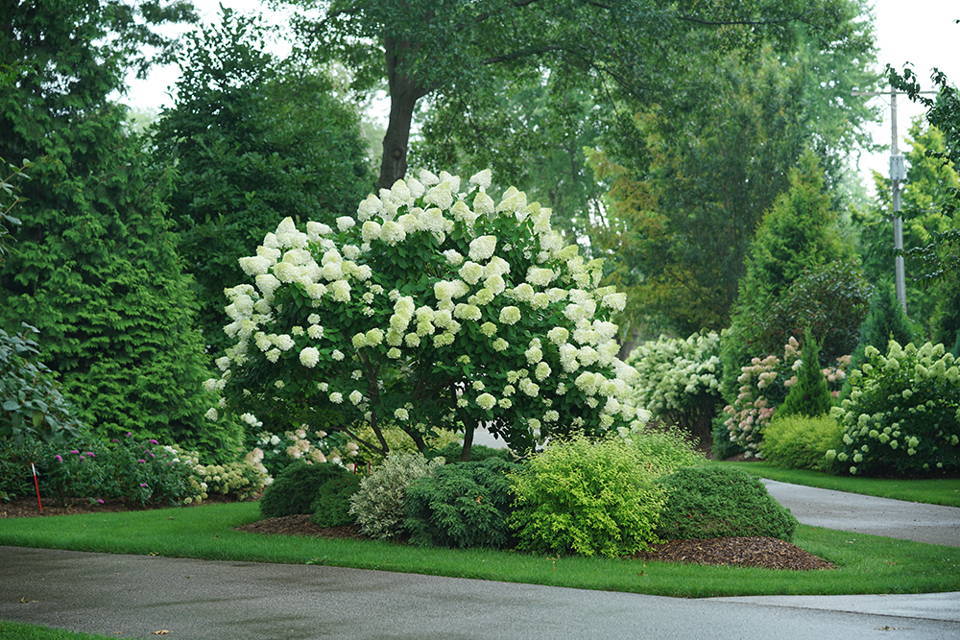What Is a Hydrangea Tree & How Do I Make One?

You may have seen it passing by a neighbor's garden or in a magazine: a glorious hydrangea with its signature large flower heads atop tall branches, in a habit that is seemingly shaped like a tree. While you may be searching for hydrangea tree varieties, you will come up short because these hydrangea trees are just shrubs trained to take on a tree form! Here, we'll discuss step-by-step how to shape your hydrangea into a tree and how to keep its form for years to come.
How To Train a Hydrangea Shrub Into a Tree
First things first, choose your hydrangea! We prefer creating hydrangea trees with panicle hydrangeas (Hydrangea paniculata) because their massive clusters of cone-shaped flowers and taller habits can be formed easily into a tree compared to other types.
Plant as you usually would, in a sunny spot with afternoon shade and average to well-drained soil. Train the main cane (or the largest/sturdiest cane) upward to grow straight up to begin forming the vertical "trunk" and prune off any smaller canes. Continuously prune off emerging leaf nodes to divert all energy toward the central leader, allowing it to grow strong and sturdy for about a year. While it may seem tedious to wait a year, we promise the wait will be well worth it.
The main cane should stand tall the following spring and nearly straight upwards. This is when you will prune the main leader where you want the branching to begin. For panicle hydrangeas, we recommend starting this at least 24 inches off the ground to give the shrub enough vertical space to leave the main leader visible to give it a tree-like appearance.

Pictured: 'Limelight' Panicle Hydrangea
The bulk of the work for turning your hydrangea shrub into a hydrangea tree comes the following spring after the root system is well established. Next, prune the terminal buds where you want the branching to begin; this will cause new growth to point horizontally to create a tree-like habit. Horizontal canes will grow nodes and flower into huge cone-like flowers outward and upward from the main branch. Think lollipop! Be patient; it may take a few years to fully take on a tree form. Once it's in the desired shape, continue trimming off dead wood or crossing branches and shoots, which diverts energy to encourage strong blooms.
